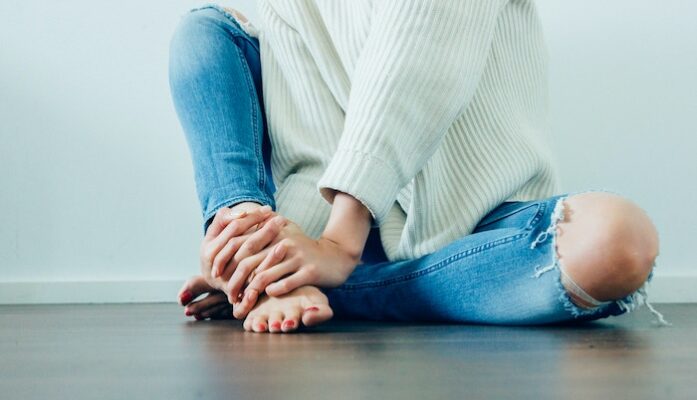
Having sore, swollen feet is a common problem, whether from pregnancy, hiking or just a long day cleaning the house. It’s important to ensure no serious medical issues are causing your discomfort.
One study found that around 20% of people had foot pain at any given time, so you’re definitely not alone. Here are six natural remedies to get you back on your feet — painlessly.
1. Get a Massage
Sometimes a good self-massage is enough to work out any tension in your feet. Other times, you might want to book an appointment with a professional. Many pedicures include a massage session — and, as a bonus, you’ll also get your nails done. You could also see a massage therapist about treating your feet.
2. Soak in a Hot Bath
First, try exfoliating your feet with a dry brush to loosen up any dead skin. Then, draw a hot bath with Epsom salt and dip your feet in. You might as well soak your whole body while you’re at it. If you like, you can add oatmeal to the water to soothe your skin even further.
Afterward, rub lotion or oil on your feet to moisturize them. This is also a good idea if your feet have fissures or are extremely dry.
3. Buy Better Shoes
Your shoes could be contributing to sore, swollen feet. Your toes could be compressed if they’re too small, causing them to develop blisters or numbness. Oversized shoes can make your heels and Achilles tendon area rub the back of your shoes.
The right footwear should have good arch support, help you maintain the proper posture and feel comfortable to wear all day. You shouldn’t wear high heels for hours at a time — no matter how good they look!
4. Try the RICE Technique
This acronym stands for “rest, ice, compression and elevation.” Here’s a breakdown:
- Rest: Give your feet a break. You officially have permission to stay home and relax.
- Ice: If you suspect you have a foot injury, make an ice pack by wrapping some ice in a towel. Apply it for 15 to 20 minutes, then take a break. You may need to do this several times a day while your foot heals.
- Compression: Bandage your foot snugly but loosely enough to maintain good circulation and feel comfortable.
- Elevate: Lie down, prop your feet up and get comfortable. In addition to helping your swelling go down, it’s also the perfect position for binge-watching Netflix.
5. Prevent Further Foot Pain
Do running or other outdoor activities leave you sore? Do you end up with blisters after taking your recommended 10,000 daily steps, much less going on a day hike? If so, there are a few things that would probably help immensely.
Assuming your shoes fit well, a common culprit of blisters and soreness is wearing the wrong socks. Opt for thick, wool socks on long hikes — or a wool-synthetic blend — to cushion your feet. Ensure they stick up above the top of your boots.
Another preventive measure is to tape your feet with moleskin before a hike or when wearing dress shoes. This heavy cotton fabric has adhesive on one side, like a bandage, preventing your feet from rubbing against your shoes. Try putting it on your heels, the Achilles tendon area, between your toes or anywhere you’re prone to getting blisters.
6. Stretch Your Calves
Your calves are directly connected to your feet, and leg tightness can contribute to foot pain. Gently stretch your legs until your muscles feel a sense of relief.
You can stretch your calves by doing a slow lunge with your back leg extended behind you. You could also brace your foot against a curb or step, leaning forward into the stretch.
Getting Back to Good Standing
Having sore, swollen feet ranges from annoying to debilitating. Your feet support your entire body weight and get you where you need to go, so taking good care of them is important. You can try a range of home remedies to ease your discomfort. However, if you have severe or persistent foot pain, it’s always best to see a doctor.
Photo by Imani Bahati on Unsplash


















